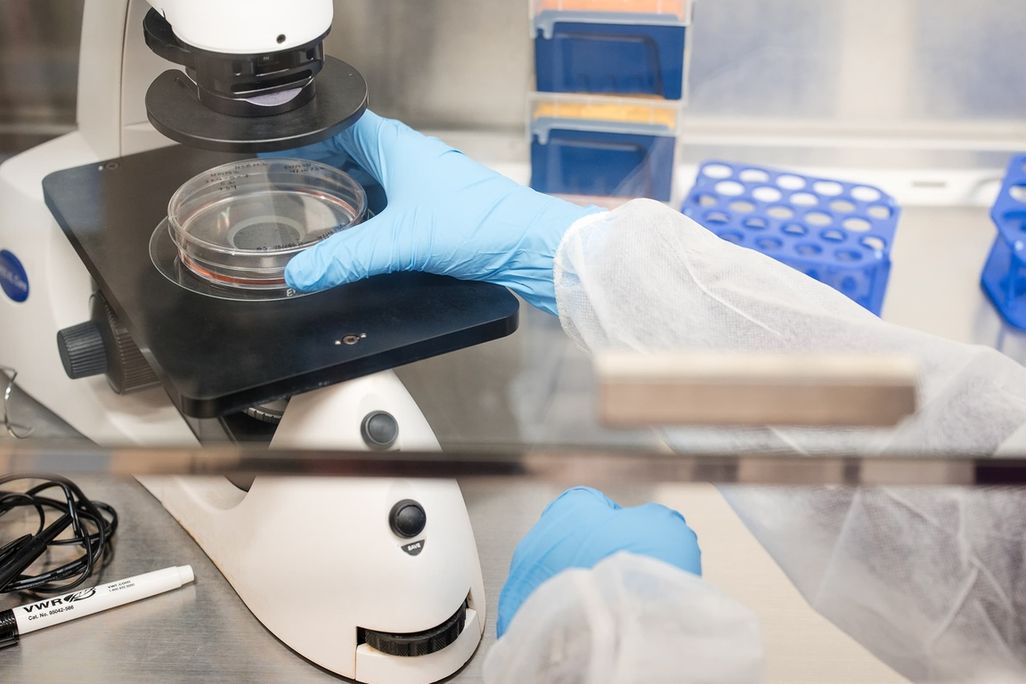In a Remarkable First, a Baby With a Rare Disease Receives Personalized Gene Therapy
Researchers say the CRISPR-based technique used could eventually be employed to treat more people with rare genetic diseases

For the first time, doctors have treated an infant with a rare genetic disease with a gene-editing therapy tailored specifically to the mutation he carries.
KJ Muldoon was diagnosed with severe carbamoyl-phosphate synthetase 1 (CPS1) deficiency, a rare disease that affects around one in a million babies, as a newborn. The urea cycle disorder can eventually lead to a toxic accumulation of ammonia in the bloodstream. That can cause brain damage, and in some cases, death.
KJ’s doctors at the Children’s Hospital of Philadelphia and an international team of researchers raced to develop a treatment. “Every day that passed there was another risk that he could have neurologic injury from an elevated ammonia episode,” Rebecca Ahrens-Nicklas, one of KJ’s physicians, says to Rob Stein at NPR.
The Muldoons had to make a difficult decision: they could wait for a liver transplant, or try something new. “Our child was sick. We either had to have a liver transplant or give him this medicine that’s never been given to anybody before,” Kyle Muldoon, KJ’s father, says in a statement. “It was an impossible choice, but we felt this was the best possible scenario for a life that, at one point, we didn’t know if he would be able to have.”
Over the course of several months, scientists succeeded in developing a customized gene-editing therapy tailored to KJ using a technique called base-editing, a CRISPR-based technique which rewrites DNA code one letter at a time. The treatment involved giving KJ an IV infusion with the gene editing therapy included in lipid nanoparticles that were taken in by liver cells.
“CRISPR, a gene editor, enters the nucleus of the cell,” explains Kiran Musunuru, one of the researchers, in a statement. “In this case, we programmed it to go to the site of the genetic variant that was causing the disease in KJ.”
In 2020, the gene editing tool CRISPR won its inventors the Nobel Prize, and researchers have made many advances with it over the course of its short lifetime. The innovation can be employed to make precise changes to the DNA of animals, plants and microorganisms. Early on, CRISPR was often used to snip out DNA strands. In the work with KJ, doctors used a technique that flipped a DNA letter—or "base"—to a different type, reports Laura Ungar of the Associated Press. Such a procedure reduces the risk of unintended changes.
The drug developed was specific to KJ's genetic sequence, Ahrens-Nicklas tells Heidi Ledford at Nature, and it is unlikely to be used for another individual.
That first day was daunting. “The first time you're putting a new drug into a baby is scary,” says Ahrens-Nicklas to NPR. “No one has done this before. No one has developed a personalized gene-editing therapy for an infant. It was quite a nerve-wracking but exciting day. And it was quite a momentous day.”
The scientists described their work at the annual meeting of the American Society of Gene & Cell Therapy and in the New England Journal of Medicine on May 15.
KJ, now nine-months old, is hitting developmental milestones, like rolling over or sitting up by himself. "That's big for us," Nicole Muldoon, KJ’s mother, tells NPR. It’s too soon to call the treatment a cure, however. “This is still really early days,” says Ahrens-Nicklas. “We know we have more to learn from him.”
Still, the technique could eventually be tailored to other rare genetic diseases. Scientists are also developing CRISPR tools to treat sickle cell disease, a blood disorder that affects eight million people worldwide, and are experimenting with treating certain forms of genetic blindness.
“Ultimately we hope this has set a precedent where we have firmly entered a world of genetic cures—CRISPR cures—on demand,” says Fyodor Urnov, scientific director of the Innovative Genomics Institute at the University of California, Berkeley, and a member of KJ’s treatment team, to NPR. “I think we can say: This is the year when CRISPR-on-demand is truly born.”
Carlos Moraes, a neurologist at the University of Miami who wasn’t involved with the work, echoes that sentiment. “Once someone comes with a breakthrough like this, it will take no time” for other teams to apply the lessons and move forward, he says to the AP. “There are barriers, but I predict that they are going to be crossed in the next five to ten years. Then the whole field will move as a block because we’re pretty much ready.”
/https://tf-cmsv2-smithsonianmag-media.s3.amazonaws.com/accounts/headshot/Sara_-_Headshot_thumbnail.png)


